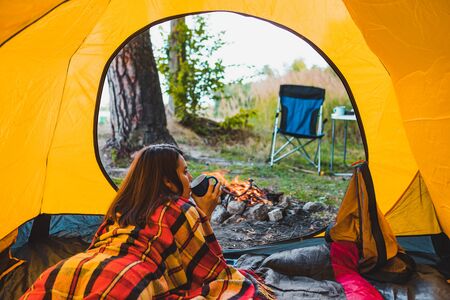Understanding Indigenous Lands and Their Significance
When we think about camping in the great outdoors, it’s important to recognize that many of the beautiful places we love to visit are on Indigenous lands. These areas have been home to Native American tribes for thousands of years and hold deep historical, spiritual, and cultural significance. Indigenous peoples have cared for these lands long before national parks or public recreation areas existed. By understanding this history, we honor their enduring connection and stewardship. When we camp, hike, or explore these spaces, it’s more than just a fun family adventure—it’s an opportunity to teach our children about respect, gratitude, and the rich heritage woven into the land beneath our feet. Taking time to learn about the original caretakers of these places helps us become more thoughtful visitors and fosters a culture of appreciation for the stories, traditions, and wisdom that Indigenous communities continue to share today.
2. Researching Your Camping Area
Before you head out for a dispersed camping adventure, its essential to find out if your chosen spot is on or near Indigenous lands. This is not only about following the law but also about showing respect for the cultural significance and stewardship these lands represent. Knowing where you are camping helps ensure that your family’s outdoor experience honors local communities and preserves natural beauty for future generations.
How to Identify Indigenous Lands
Start by researching maps provided by the Bureau of Land Management (BLM), U.S. Forest Service, and the National Park Service. Many of these agencies highlight Indigenous land boundaries. You can also use online resources like Native Land Digital (native-land.ca) to see who the traditional caretakers of an area are. Local tribal websites sometimes share their own maps and guidelines for visitors.
Common Resources for Checking Land Status
| Resource | Description | Website/Contact |
|---|---|---|
| Bureau of Land Management (BLM) | Federal agency managing public lands, including dispersed camping info | blm.gov |
| U.S. Forest Service | National forests and grasslands info, often with camping rules and maps | fs.usda.gov |
| Native Land Digital Map | Interactive map showing Indigenous territories across North America | native-land.ca |
| Tribal Websites or Visitor Centers | Local information, regulations, and points of contact for specific tribes | Search local tribe name + “official site” |
Understanding Boundaries and Regulations
If you discover your camping spot may overlap with or be close to Indigenous land, take time to learn about any specific rules or access restrictions. Some lands are open to respectful recreation, while others may be off-limits due to cultural practices or environmental protection efforts. Always check if permits are required or if certain activities (like campfires or fishing) are restricted.
Quick Tips for Responsible Planning:
- If in doubt, call ahead—local ranger stations or tribal offices can clarify boundaries.
- Respect posted signs and fencing; they often mark sacred areas or private property.
- Avoid disturbing artifacts, plants, or wildlife—these may hold special significance.
- Teach kids about the importance of treading lightly and respecting all cultures as part of your outdoor adventure.
Taking these steps ensures your family camping trip is both fun and mindful, supporting a culture of respect and shared stewardship on America’s beautiful lands.

3. Seeking Permission and Following Guidelines
When planning to go dispersed camping on or near Indigenous lands in the U.S., it’s essential to understand that many of these areas are not public property, but rather sovereign territories belonging to Native American tribes. Before setting up camp, always research whether you need special permission or permits from the tribe. Many tribes have specific entry requirements, restrictions, or designated camping zones to protect their land and culture. Even if there aren’t clear signs or obvious boundaries, respect starts with asking questions and being proactive about permissions.
Adhering to posted rules and tribal regulations is just as important as getting approval. These guidelines are often established to safeguard sacred sites, wildlife habitats, and traditional practices. They may include limits on campfires, restrictions on collecting plants or rocks, or quiet hours to respect local customs. By following these rules, you not only show respect for the tribe’s sovereignty and traditions but also help preserve the natural beauty and cultural significance of these lands for future generations. Remember, being a responsible camper means honoring the wishes and laws of those who have stewarded these places long before us.
4. Respectful Camping Practices
When you’re out dispersed camping on Indigenous lands across the U.S., it’s essential to camp with respect and care. Practicing Leave No Trace principles not only preserves the natural beauty of these places, but also honors their cultural significance for Native communities. Here are some practical ways your family can camp responsibly and respectfully:
Leave No Trace: Everyday Actions
| Principle | Practical Tips for Families |
|---|---|
| Plan Ahead & Prepare | Research local regulations and tribal rules before you go. Teach kids about the area’s history and why it matters. |
| Travel & Camp on Durable Surfaces | Set up camp on established sites or bare ground—avoid fragile vegetation and sensitive areas. |
| Dispose of Waste Properly | Packing out all trash is a must. Use designated toilets if available, or follow guidelines for digging catholes far from water sources. |
| Leave What You Find | Never take rocks, pottery shards, or other artifacts as souvenirs. Encourage children to look, not touch, and explain the importance of preserving history for everyone. |
| Respect Wildlife | Observe animals from a distance and secure food to avoid attracting them to campsites. |
| Be Considerate of Others | Keep noise levels low and give fellow campers plenty of space. |
Minimizing Impact at Cultural Sites
If you encounter petroglyphs, ancient dwellings, or marked sacred spaces, treat them with extra care. Do not climb on structures or touch rock art, as even gentle contact can cause damage. Stay on designated paths and remind your kids that these places are living parts of Native heritage.
What To Do If You Find Artifacts or Sacred Spaces:
- Observe only: Take photos instead of objects—never disturb or remove items.
- Avoid making new trails: Stick to existing routes to prevent erosion and protect hidden sites beneath the surface.
- If unsure, ask: Reach out to local tribal offices or visitor centers for guidance about areas you’re exploring.
A Family Conversation Starter
A simple way to build lifelong respect is to talk with your kids about why these rules matter. Ask them how they would feel if strangers visited their home without asking—or took something precious without permission. These discussions turn good intentions into meaningful action while camping together on America’s beautiful Indigenous lands.
5. Building Awareness and Teaching Kids
As parents and caregivers, we have a wonderful opportunity to guide our children in understanding and respecting the significance of Indigenous territories while dispersed camping. Start by including age-appropriate stories about Native American history and present-day communities when planning your trip. Before you leave home, research whose ancestral land you’ll be visiting using online resources or apps—many U.S. parks and forests were originally cared for by Indigenous peoples. Share this information with your kids in a gentle, conversational way to nurture curiosity and respect.
During your adventure, encourage your family to observe the land thoughtfully. Explain that traditional practices like “Leave No Trace” often align with Indigenous values of stewardship and reciprocity. You can invite your children to help pack out all trash, stick to established trails, and avoid disturbing plants or artifacts as acts of respect for both nature and its original caretakers.
If you encounter signage, monuments, or interpretive materials that share local Indigenous history, pause to read them together. Ask open-ended questions—like “Why do you think it’s important to honor these lands?”—to spark meaningful conversations. Consider attending ranger talks or cultural programs if available; many national forests and parks collaborate with local tribes to educate visitors about their heritage.
Back at home, continue learning through books written by Indigenous authors or by exploring virtual museum exhibits together. Making this awareness a regular part of your family’s outdoor routines helps foster empathy, gratitude, and a lifelong culture of mutual respect for all people and the places we visit.
6. Supporting Indigenous Communities
When we venture out for dispersed camping, we have a unique opportunity to not only enjoy the beauty of the land but also to support the Native communities whose history and heritage are deeply connected to these places. Here are some practical ways families can make a positive impact while camping:
Buy Local Goods and Services
Choose to purchase art, crafts, food, and other products directly from Indigenous vendors or at local markets. Not only does this help sustain Native economies, but it also gives you a chance to bring home meaningful souvenirs that tell a real story.
Learn About Their History
Before your trip, spend some time researching the Native tribes associated with the area you’ll be visiting. Many regions have visitor centers, museums, or historical markers that offer insights into Indigenous history and culture. Sharing what you learn with your children can foster respect and curiosity about America’s first peoples.
Amplify Indigenous Voices
Support Indigenous-led organizations on social media by sharing their content or stories about their land stewardship efforts. You can also attend public events or talks hosted by Native groups if your schedule allows. By listening and sharing their perspectives, you help raise awareness about the importance of respecting these lands.
Simple Actions Make a Difference
Every action counts—whether it’s volunteering for a clean-up project organized by an Indigenous group or simply having respectful conversations with your kids about why these lands matter. Remember, being mindful campers means honoring both the natural environment and the people who have cared for it for generations.
Together, Let’s Camp with Respect
By supporting Native communities in these small but meaningful ways, we teach our children about gratitude, respect, and cultural appreciation—values that last far beyond any camping trip.


